Abstract
An estimate has been made of the quantities of alkali-labile esters of indoleacetic acid (IAA) in kernels of sweet corn (Zea mays). The amount is between 70 to 90 mg of IAA per kilogram of dry kernels. About one-half of the IAA is present as high molecular weight esters and the remaining one-half as esters of myo-inositol. Free IAA, which may have existed in the kernels, or may have resulted from ester hydrolysis during isolation or storage, amounts to between 1 to 10% of the esterified IAA. Five newly observed low molecular weight indoleacetyl compounds are described and their chromatographic behavior reported. The total IAA content of corn kernels and intact seedlings decreases during germination, declining to about 10% of the original content during 96 hr of germination. Difficulties in obtaining quantitative results and the possible physiological significance of these results is discussed.
Full text
PDF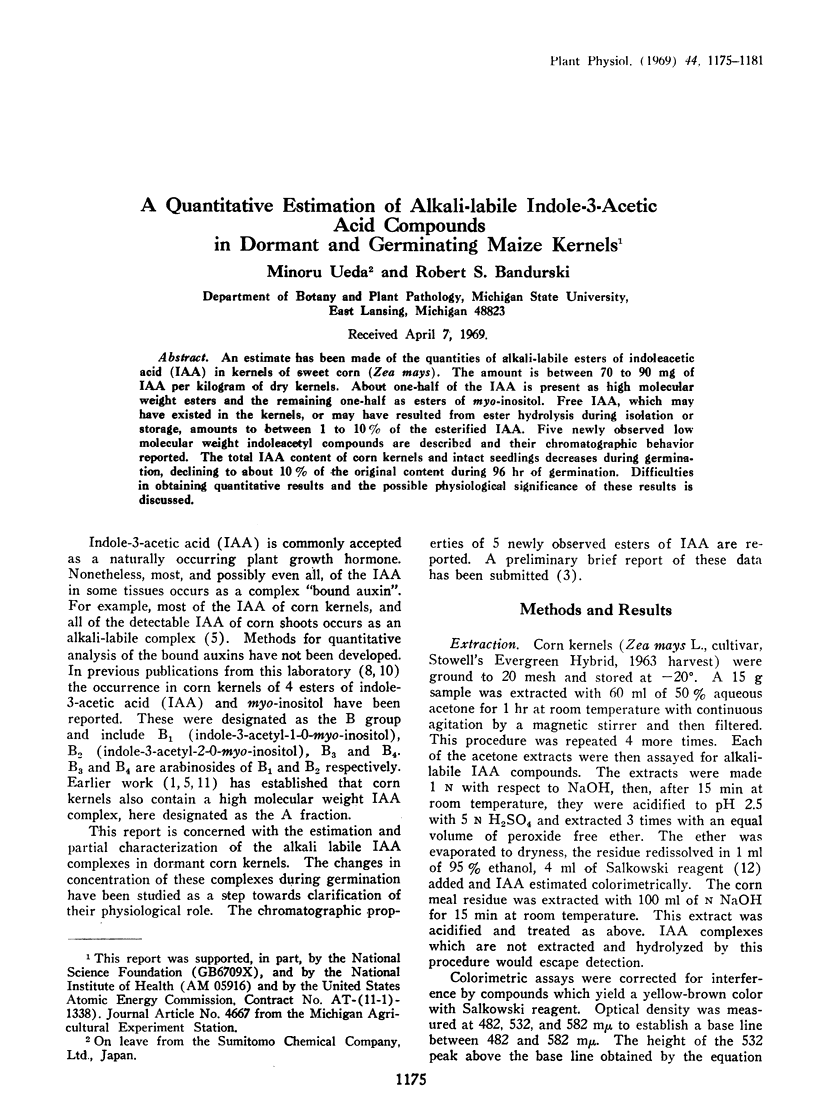

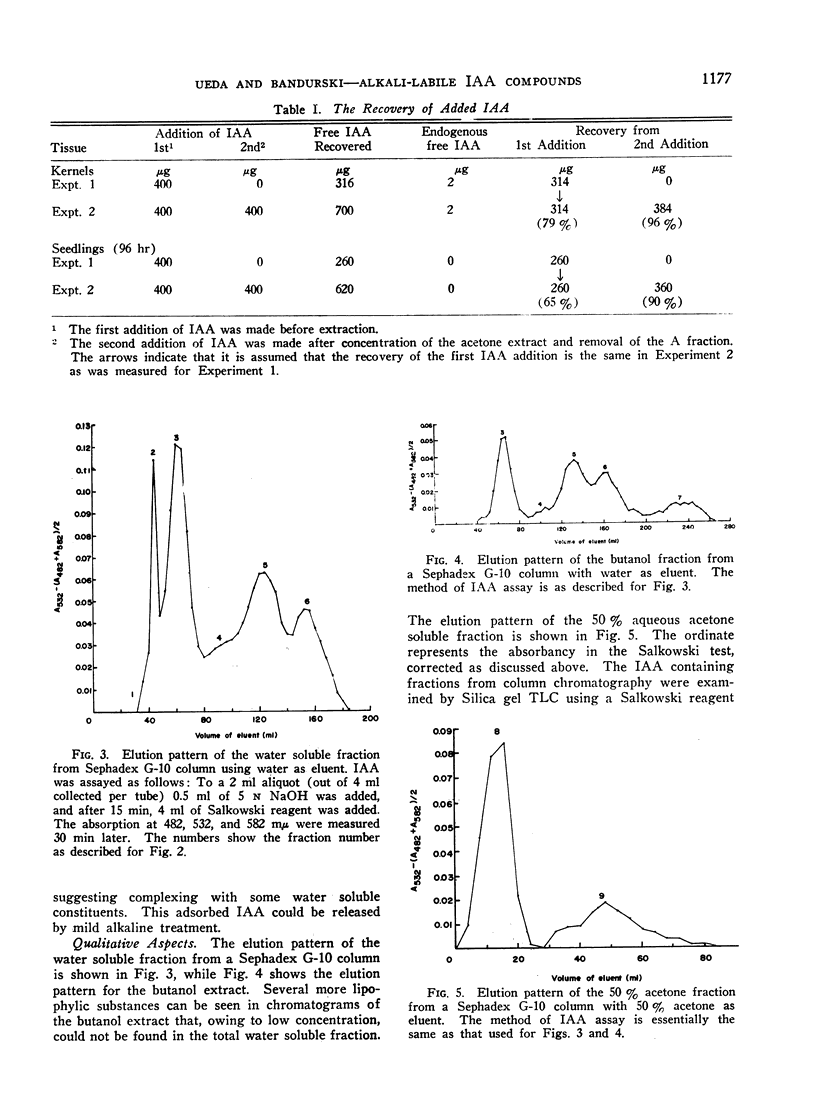
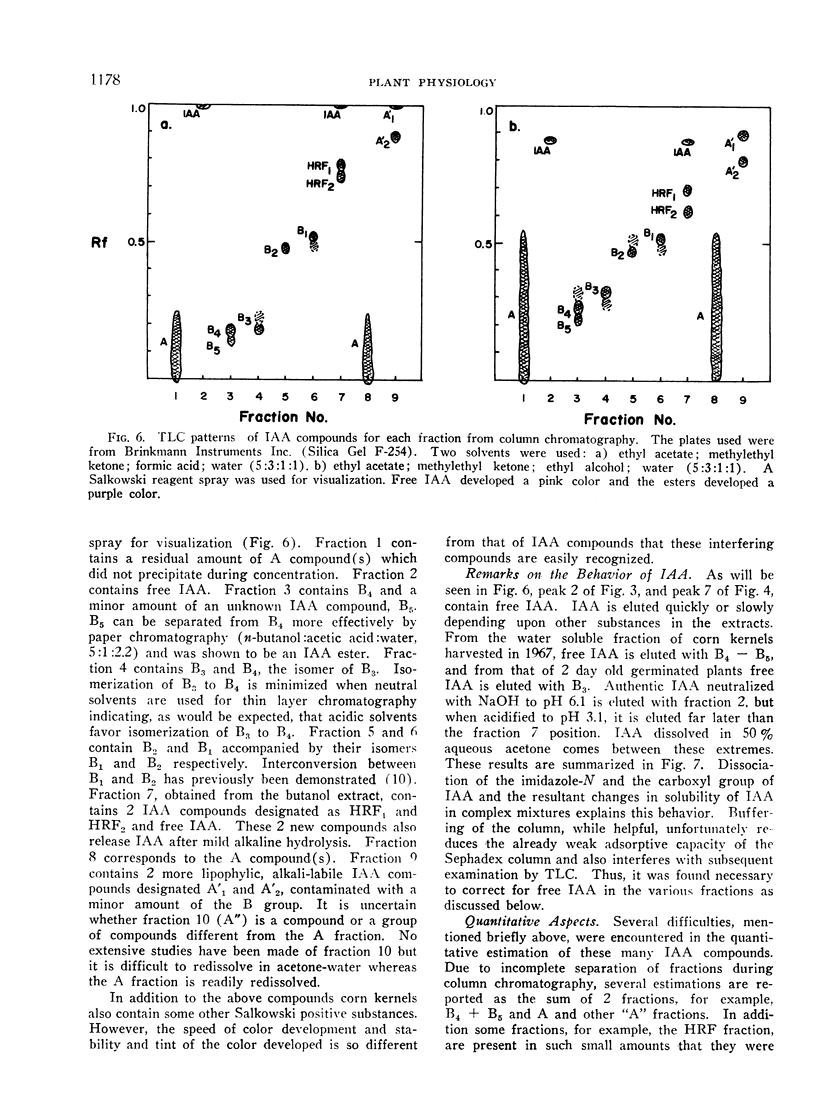
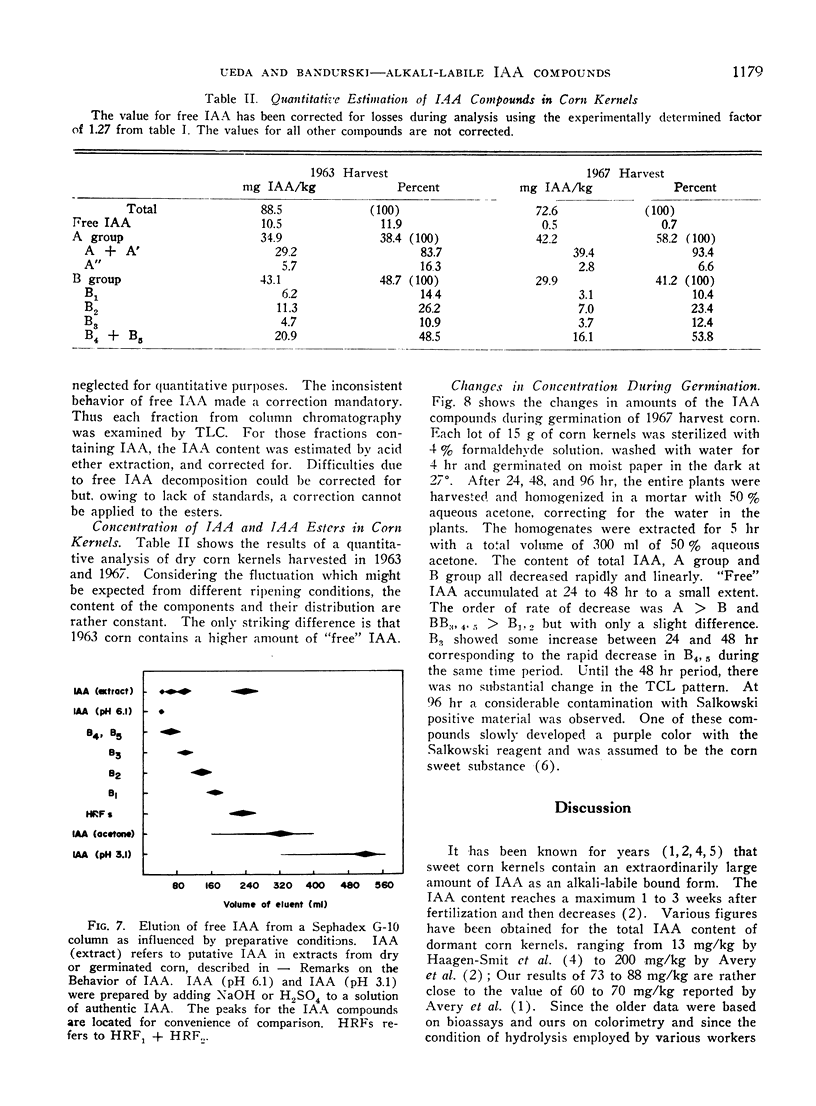

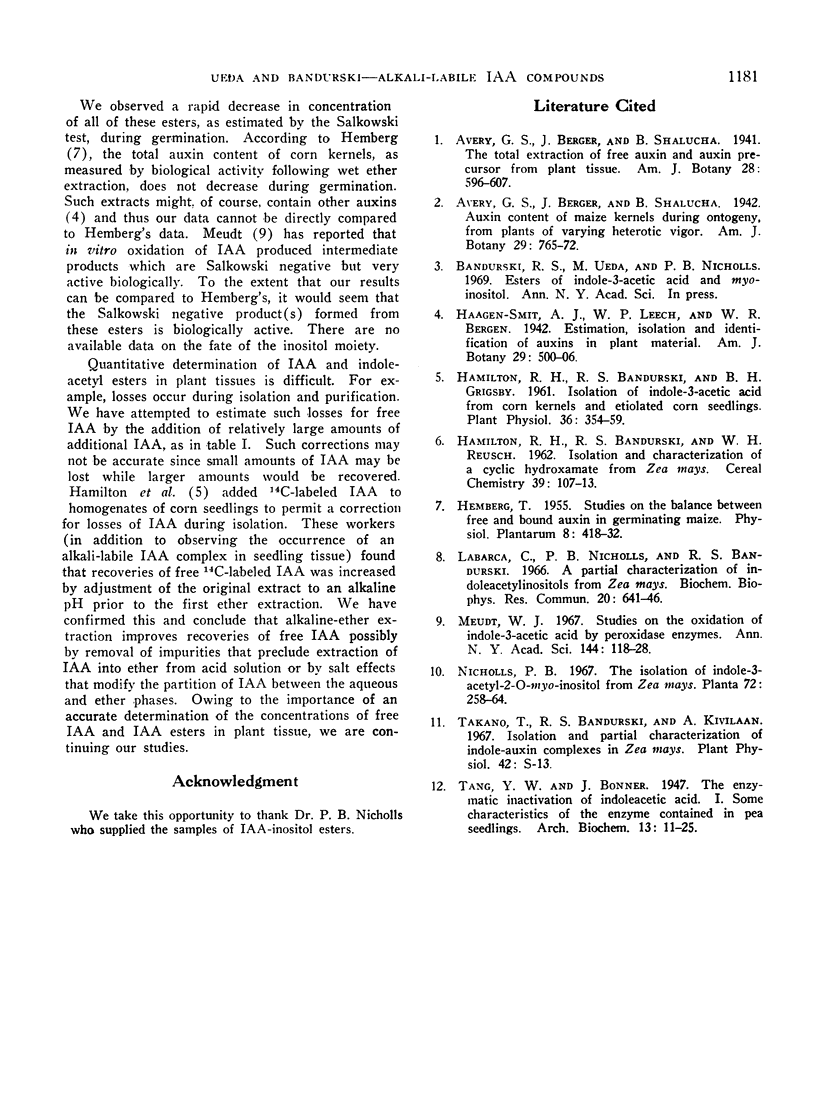
Selected References
These references are in PubMed. This may not be the complete list of references from this article.
- Hamilton R. H. Isolation of indole-3-acetic acid from corn kernels & etiolated corn seedlings. Plant Physiol. 1961 May;36(3):354–359. doi: 10.1104/pp.36.3.354. [DOI] [PMC free article] [PubMed] [Google Scholar]
- Labarca C., Nicholls P. B., Bandurski R. S. A partial characterization of indoleacetylinositols from ZEA mays. Biochem Biophys Res Commun. 1965 Sep 8;20(5):641–646. doi: 10.1016/0006-291x(65)90448-1. [DOI] [PubMed] [Google Scholar]
- Meudt W. J. Studies on the oxidation of indole-3-acetic acid by peroxidase enzymes. Ann N Y Acad Sci. 1967 Aug 9;144(1):118–128. doi: 10.1111/j.1749-6632.1967.tb34006.x. [DOI] [PubMed] [Google Scholar]


